 | |
MALTESE SCHOOLS IN OZ | |
 | |
SCHOOL MATTERS | |

 | |
MALTA DATABASE | |
 | |
MISCELLANEOUS | |
 | |
CUISINE IN MALTA | |
 | |
MALTESE HERITAGFE | |
\
 | |
FOLKLORE AND LEGENDS | |
|
| |
 | |
WEBSITE OF THE MALTESE LANGUAGE SCHOOL OF ADELAIDE | |
|
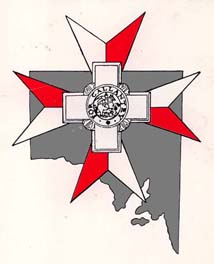 We would like to introduce you to the website of the Maltese Language School of Adelaide, which is the first Maltese/South Australian site on the WWW. This unique
website is the voice of the teachers and students of our school. Professor
Maurice Cauchi of Malta describes Building Virtual Bridges as "one of the best websites I have seen so far by a Maltese Association." We would like to introduce you to the website of the Maltese Language School of Adelaide, which is the first Maltese/South Australian site on the WWW. This unique
website is the voice of the teachers and students of our school. Professor
Maurice Cauchi of Malta describes Building Virtual Bridges as "one of the best websites I have seen so far by a Maltese Association."
But, the best description was published in The Advertiser, Adelaide's daily newspaper, when our site was selected as the HOMEPAGE of the WEEK - Well, it is more than a homepage. It is a cross-cultural world devised
by Frank Scicluna. He calls it Building Bridges site- and so it is, drawing
together the links between Malta and Australia with a strong emphasis on
South Australia being also a link to the Maltese Language School of Adelaide.
There is a wealth of interest in this website, which features myriad links
as well as constructed pages. Samela Harris THE ADVERTISER (South Australian Newspaper).
Our website's principal aim is to encourage our younger generation to interest
themselves in learning more about the Maltese language, culture and heritage. Our success is measured by the fantastic response we received so far from
all those who visited our site.
The Maltese School of Adelaide, which was established in 1982, although
small is still very active and vibrant and the number of young Maltese/Australians
who attend our classes are benefiting from the educational services we
professionally offer. We encourage you to read what they had to say about
why they are learning Maltese on our site. Their comments cement our arguments that the Maltese language and culture
will never fade away as long as we have people who love, appreciate and
want to share them with the wider Australian community.
Now, I believe, it is appropriate to end with a comment in Maltese that
we received recently from one of our regular readers in Sydney about our
site;
Prosit talli qed izzid NEW web entries. Verament il-website tieghek, Building Virtual Bridges, sar jixbah xi encikolpedija informattiva u edukattiva. Ghogobni l-artiklu
dwar il-Konferenza dwar il-Kunsill Federali ta' 1993. B'hekk l-istorja
tkun korretta u ma tigix misinterpretata maz-zmien. Hadt gost ukoll nara
li hemm is-sources, jew bil-Malti korrett, l-ghejun mnejn inixxu dawn l-artiklu
ta' ilma helu, ilma gieri, ilma safi, ilma Malti-Awstraljan, Kompli f'din
ir-rotta.-- Mark Caruana - Migration Historian (Sydney, NSW) |
 | |
WHY THE MALTESE LANGUAGE IS SO IMPORTANT? | |
|
Knowledge of the Maltese Language is a relevant factor in determining the relationship between parents and their children. Language is culture and many family values emerge from such knowledge.
It is essential for children of Maltese parents to have the opportunity of advancing their own personal development through the knowledge of their parents' language and culture of birth and ethnic background.
Multiculturalism and education policies in Australia encourage children to take up a second language whilst at school. Fluency and knowledge of a second language, including Maltese, is an important factor in employment prospects and often, employees who use a second language in their employment have a better chance of obntaining a better employment. It is also relevant to promotion in employment particularly within Government services.
A special weighting is given to students studying a second language and often Victorian Certificate of Education (V.C.E.) results are enhanced as a result of successfully undertaking a second language as a subject. It can also result in a student being offered a place at a University of his/her choice.
The Maltese community in Australia is large enough to maintain a number of Maltese speaking professionals including doctors, lawyers, architects, engineers, social workers and many others. The Maltese generally prefer to consult professionals who speak their own language and are aware of their culture and background.
Currently in Australia we have schools teaching Maltese language and culture in Victoria, South Australia, Australian Capital Territory, Mackay ~ Queensland, Wollongong and Sydney ~ New South Wales and soon a new school is opening in Western Australia. A new federation of Maltese Schools is being formed to coordinate the teaching of Maltese and to serve a network between all schools and linking them to Maltese and Australian Government departments.
The next conference is held on Saturday, 2 August 2008, at the Malta High Commission in Canberra ACT
|
 | |
CONSULATE OF MALTA IN SOUTH AUSTRALIA | |

The Consul for Malta has jurisdiction throughout the State of South Australia. The consulate has been established to promote the lawful interests of Malta and its citizens in the State of South Australia and to develop further the economic and other relations between this State and Malta.
South Australia is home to over 3000 Maltese and including second and third generation well over 5500. Accordingly, the Consular functions are wide and varied. They range from economic activity to the processing of passports and visas, the legalising of documents on behalf of Malta, and monitoring the operation of bilateral agreements between Malta and Australia.
Support to the community translates itself also in the provision of adequate and updated information. It is with this purpose in mind that the Consulate is providing this source of relevant on our new website http://www.geocities.com/frans311/aconsular html.
This website is also intended to strengthen the sense of community by encouraging groups and associations to embellish their involvement in a way that they not only promote their own benefit, but the benefit of the whole community.
The Consulate is open for business from Mondays to Fridays from 9.00am to 5.00pm, or after hours by appointment only. No business is conducted from the Consulate on public holidays. These include the five national holidays in Malta: Freedom Day (March 31), Victory Day (September 8), Malta's National Day (Independence Day; September 21), and Republic Day (December 13).
Hon Consul - Frank L Scicluna OAM JP may be contacted on 8269 2948 (SA residents only)
|
 | |
THE CHILD SLAVES FROM MALTA | |
 While the storm over the criminal treatment of many child migrants blew over the latter half of the nineties little reference was made to the Maltese component of the child migrant scheme. The Maltese former child migrants have taken a back seat in the child migration debate, due largely to the fact that they were numerically small compared to the number of British children sent as child migrants to Australia.
Experts on the child migration period differ widely on the number of children sent to Australia. Mr Alan Gill (Orphans of the Empire) claims that 30,000 children were sent between 1912 to the late 1960s. Professor Sherington (Submission No 119- Lost Innocence - Australian Senate Report) claims 6,000 for the same period. There is a similar lack of consensus with the post - war estimates also. Here they range from the UK Health Committee report figures of 7,000 - 10,000 to Dr Barry Coldrys estimates of 3,000 to 3,500 (Submission No 13 - Lost Innocence - Australian Senate Report).
While the storm over the criminal treatment of many child migrants blew over the latter half of the nineties little reference was made to the Maltese component of the child migrant scheme. The Maltese former child migrants have taken a back seat in the child migration debate, due largely to the fact that they were numerically small compared to the number of British children sent as child migrants to Australia.
Experts on the child migration period differ widely on the number of children sent to Australia. Mr Alan Gill (Orphans of the Empire) claims that 30,000 children were sent between 1912 to the late 1960s. Professor Sherington (Submission No 119- Lost Innocence - Australian Senate Report) claims 6,000 for the same period. There is a similar lack of consensus with the post - war estimates also. Here they range from the UK Health Committee report figures of 7,000 - 10,000 to Dr Barry Coldrys estimates of 3,000 to 3,500 (Submission No 13 - Lost Innocence - Australian Senate Report).
Migrant Children Records
Child Migration
The Untold Story
|
 | |
MALTESE CULTURE - THE BALCONY - IL-GALLERIJA | |

Traditional balconies certainly go a long way in defining the character of the Maltese urban landscape. Through their abundance of colours, materials, textures and decorative motifs, they enrich the visual aspect of our streets. Projecting into the urban space, they dominate and articulate it.
When touched by the strong light so typical of our region they cast deep shadows on large expanses of plain stone walls creating a dynamic ciaro-scuro effect. Much like hanging gardens, the multitude of floral and foliage motifs in stone, wood and iron enliven both grand avenues and shady alleys. Further more, these static gardens are alive with beasts such as lions and horses, angelic figures and contorted faces.
Due to their often sizeable proportions balconies also play a significant role as epitomies of architectural styles prevailing during particular periods. Balconies often constitute the main component of a facade and have a prime role in defining the architectural hierarchy both within a building and between different buildings. The largest, and most lavishly decorated, are usually those of the Piano Nobile of palazzos.
 |
 | |
MALTESE CULTURE - THE FALDETTA - L-GHONNELLA MALTIJA | |
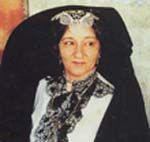
Most Maltese women up to the 1930s and even during the Second World War days used to wear the ghonnella. That headgear used to distinguish her from all other women of the world. The ghonnella covered the head and wrapped round the body from the waist upward; it did not cover the face, but with a little move hid it from curious eyes.
The ghonnella endowed Maltese women with a proud and pretty appearance. It became her, showed her sprightly and honoured her in people's eyes. The cover of ghonnella was like a charm which bewitched and enticed men to yearn for a more revealing look at the eager face hidden behind it while the big and alluring eyes shot through the little hoop in the ghonnella like the arrow of the Son of Venus.

|
 | |
THE AUSTRALIAN ABORIGINAL CULTURE | |

The word "aboriginal" means "the first" or "earliest known". The word was first used in Italy and Greece to describe people who lived there, natives or old inhabitants, not newcomers, or invaders.
Australia may well be the home of the worlds first people. Stone tools discovered in a quarry near Penrith, New South Wales, in 1971 show that humans lived in Australia at least twelve thousand years before they appeared in Europe.
So far three early sites have been discovered in Australia, the Penrith one being dated about forty-seven thousand years old, a Western Australian site forty thousand years old and another in Lake Mungo, New South Wales, thirty-five thousand years old.
To put this in perspective, so that we can appreciate the time scales, since the first fleet arrived in 1788 there have only been 8 generations of settlers. On the other hand, there have been in excess of 18,500 generations of aboriginals!!!
|
 | |
THE GRANDMASTER OF THE ORDER OF THE KNIGHTS OF MALTA | |
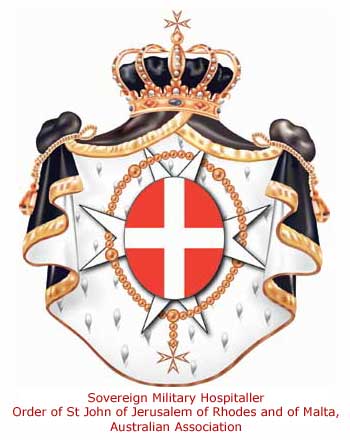
Many hundreds of years after the Neolithic period and precisely in 1530, the Knights of the Order of St. John brought about another epoch of great cultural significance to the island of Malta. This is not to say that between the sudden disappearance of the Neolithic culture and the arrival of the Knights nothing had happened. Quite the contrary. Many relics and remains witness to important historical events in this period. However, no unique or individual culture had originated from the many peoples - the Phoenicians, Carthaginians, Romans, Arabs, Normans and Castillians - who colonised the island in this prolonged interval.
The history of the Knights of St. John begins in the middle of the eleventh century in the Holy Land. The Order's original duties were to care for the sick and wounded Christian pilgrims to the Holy Land and to help the poor. But very soon their duties expanded; the fight against the infidels became of equal or even greater importance. The Knights became Soldiers of Christ. They acquired and maintained huge estates and castles in the Holy Land and finally owned a large fleet.........

Knights of Malta
|
 | |
THE NATIONAL COUNCIL OF MALTESE LANGUAGE IN MALTA | |


IL-MALTI QED JITGHALLMUH ANKE L-BARRANIN
Ċertifikat fil-Malti bħala Lsien Barrani (Certificate in Maltese as a Foreign Language)
- Fuq talba kbira li kellna, ħejjejna kors flimkien ma’ l-Università ta’ Malta għall-barranin li jridu jitgħallmu l-Malti.
- Avviċinawna bosta li ilhom snin twal hawn, u għadhom ma jitkellmux bil-Malti... u jħossuhom barranin.
- Oħrajn marru xi kors, imma ma mxewx wisq u se jibdew il-kors taċ-Ċertifikat.
- Kors ta’ sena u nofs, darbtejn fil-ġimgħa, wara l-ħin tax-xogħol.
- Ikkonkorrew bosta... tara li l-Malti mhux tal-Maltin biss, imma ta’ kull min iħobb l-affarijiet is-sbieħ ta’ pajjiżna, ta’ kull min iħobb jitkellem mal-Maltin.
- Jekk int interessat, jew taf min hu, fittex it-tagħrif
kollu hawn: Your
Golden Opportunity to Learn Maltese - PDF 45 KB,
jew iktbilna u nżommuk infurmat.
External links .... Official Website |
 | |
MARY FARRUGIA FROM MELBOURNE AUSTRALIA MAKING LACE | |
|

Mary Farrugia was born in Melbourne, her parents having migrated to Australia in the 1950's from Gozo, Malta.
In 1990 Farrugia discovered the Australian Lace Guild in Melbourne and began lessons in lace making. Both her grandmother and great grandmother were lace makers, who used their craft skills to earn an income. Today the craft of lace making has become a family affair; with her mother, aunt and cousin also participating in the craft of lace making.
Farrugia currently teaches craft techniques, specialising in bobbin lace and designing her own pieces of lace work. She aims to pass on these craft skills to ensure the beauty and history of Maltese lace making well into the future.
Mary participated in the Common Goods artist
residency program at Latrobe Regional Gallery, Morwell Victoria.
READ MORE
|
 | |
MALTESE CONTRIBUTION AT GALLIPOLI 1915 | |
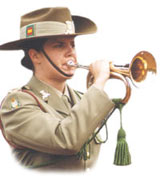
Each year Australia commemorates the anniversary of Anzac Day on the 25th of April as the day when Anzacs landed onto the beaches of Gallipoli. The courage, honesty, endurance, resourcefulness and loyalty of Anzacs became an inspiration to this young nation.
Each year Australians remember with great pride and respect its great sons of Anzacs. They recall that from the deeds and sacrifices of the Anzacs at Gallipoli there emerged a powerful sense of Australian identity and culture.
In fact, the young Turkish soldiers on one side and the young Australian soldiers on the other, were both innocent victims of cruel and imperialist policies of the major super powers of that time.
 |
 | |
WILL THE LEARNING OF MALTESE AFFECT THE LEARNING OF ENGLISH AND OTHER SUBJECTS IN ANYY WAY? | |
|
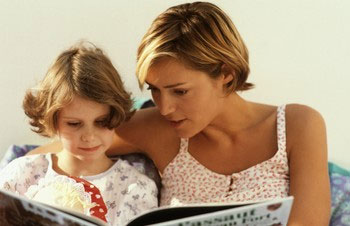
Research evidence suggests that learning another language will have a positive long-term impact on the learning of English. A good standard in another language, therefore, does not imply poor English.
In various Australian bilingual programs, experienced English
teachers judged bilingual children to be confident and fluent in expressing themselves in English. The children rapidly advanced to normal levels in English classes. They also showed positive gains in general language ability.
Bilingual students also develop communication, thinking and academic skills at a pace similar to that of children who use English only. They also have the obvious benefit of developing skills in two languages.
Children do not learn English better if they forget or neglect their home language. Evidence shows that subtracting one language does not improve the other. On the contrary, for children of nonEnglish-speaking background, improving their home language can strengthen fluency and literacy in English.
While children's mastery of English is not affected by the simultaneous learning of another language, their use of the other language is often reported as halting, simpler and less idiomatic than that spoken by their peers who grow up using only the language other than English.
Read IMPORTANCE OF READING |
 | |
AN OLD AND UNIQUE MALTESE ART OF THE GANUTELL | |
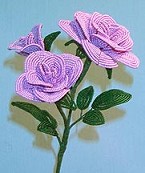 Ganutell (usually Handcrafted Flowers) is a Maltese method of creating flowers by utilising wire and embroidery floss. Ganutell is an old and unique Maltese Art which has just recently been revived.
Ganutell (usually Handcrafted Flowers) is a Maltese method of creating flowers by utilising wire and embroidery floss. Ganutell is an old and unique Maltese Art which has just recently been revived.
Ganutell flower making consists of first and foremost twisting silver or gold plated thin wire with thread. Thin thread of various colours is used to produce different colour schemes. Soon after assembling the wire and thread, this is twisted over a slightly thicker silver/gold plated wire to produce petals. After creating a number of petals, these are assembled around a bead or pearl so that a flower is shaped. Different sizes are produced according to the sizes of the petals twisted. The petals can be made of different patterns. Besides, sequins, beads and small pearls could also be inserted within each petal to offer a richer looking flower.
The advantages, when compared to beaded flowers are; the flowers are light weight and have a satin-look and easier to create. The flowers incorporate several basic techniques, all are outstandingly elegant. These flowers are infinitely suited to apparel and jewellery applications.....Read on |
 | |
ANOTHER SUCCESS STORY - Marika Scicluna, Director, B.App.Sc.(Physio), MAPA, MHPC | |
 Marika Scicluna, Director and Founder of Rehabcorp Physiotherapy, completed her Bachelor of Applied Science in Physiotherapy in 1997 and has practiced for the past seven years in a variety of private practice settings, in Australia and abroad. She has had post-graduate training and specializes in the treatment of back and neck injuries, sports injuries, work related injuries, ergonomic assessments and exercise rehabilitation.
Marika Scicluna, Director and Founder of Rehabcorp Physiotherapy, completed her Bachelor of Applied Science in Physiotherapy in 1997 and has practiced for the past seven years in a variety of private practice settings, in Australia and abroad. She has had post-graduate training and specializes in the treatment of back and neck injuries, sports injuries, work related injuries, ergonomic assessments and exercise rehabilitation.
Manual techniques, acupuncture and exercise programs are Marika's preferred treatment options to tackle the causative factors of her clients problems. Marika has worked with athletes of different levels. She has been the physiotherapist at the Australian Association of Tennis Players (AATP) Men's and Women's Satellite Tournaments in South Australia for the past three years and has worked with various netball teams. She has also participated as a State and National Judge for the South Australian Body Building Association.
The practice was established in November 1999 and has been successfully managed and directed by Marika since. However for one year from March 04-05 Marika travelled and worked in Europe, in particular Malta and Ireland, whilst her practice was managed by Marina Wrobel. During 2005 Marika has completed her studies in the Traditional Chinese Medicine Approach to Acupunture, which is a course run and accredited by the Australian Physiotherapy Association in conjuction with the Australian Society of Acupuncture Physiotherapists.
REHABCORP PHYSIOTHERAPY
101 Portrush Road EVANDALE SA 5069
63 Military Road SEMAPHORE SOUTH S.A.
Ph: (08) 8363 2929
http://www.rehabcorp.com.au/
|
 | |
A COLLECTION OF MALTESE NURSERY RHYMES | |
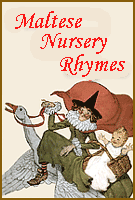 On Reading Nursery Rhymes With Children
On Reading Nursery Rhymes With Children
These Maltese nursery rhymes are designed for children who are learning how to read Maltese. Preschoolers and Kindergartners enjoy picking out the words they can read in their favorite nursery rhymes.
All children take great delight in the rhythms and melodies of tunes. Remember, your singing voice doesn't matter -- even a jolly rhythmic chant will do, if you are hoarse. The emphasis on the melody and rhythm also helps the child learn the rhyme, increasing their vocabulary, and verbal skills. Even very young children will also imitate the songs, and have favorites they ask for. I have heard children as young as a year and a half trying to sing their favorite nursery rhymes.
READ MORE |
|




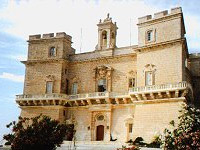

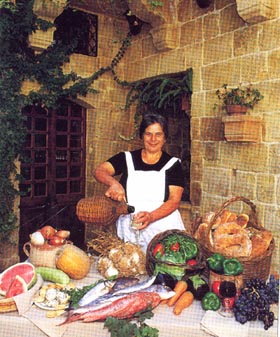

 We would like to introduce you to the website of the Maltese Language School of Adelaide, which is the first Maltese/South Australian site on the WWW. This unique
website is the voice of the teachers and students of our school. Professor
Maurice Cauchi of Malta describes Building Virtual Bridges as "
We would like to introduce you to the website of the Maltese Language School of Adelaide, which is the first Maltese/South Australian site on the WWW. This unique
website is the voice of the teachers and students of our school. Professor
Maurice Cauchi of Malta describes Building Virtual Bridges as "
 While the storm over the criminal treatment of many child migrants blew over the latter half of the nineties little reference was made to the Maltese component of the child migrant scheme. The Maltese former child migrants have taken a back seat in the child migration debate, due largely to the fact that they were numerically small compared to the number of British children sent as child migrants to Australia.
Experts on the child migration period differ widely on the number of children sent to Australia. Mr Alan Gill (Orphans of the Empire) claims that 30,000 children were sent between 1912 to the late 1960s. Professor Sherington (Submission No 119- Lost Innocence - Australian Senate Report) claims 6,000 for the same period. There is a similar lack of consensus with the post - war estimates also. Here they range from the UK Health Committee report figures of 7,000 - 10,000 to Dr Barry Coldrys estimates of 3,000 to 3,500 (Submission No 13 - Lost Innocence - Australian Senate Report).
While the storm over the criminal treatment of many child migrants blew over the latter half of the nineties little reference was made to the Maltese component of the child migrant scheme. The Maltese former child migrants have taken a back seat in the child migration debate, due largely to the fact that they were numerically small compared to the number of British children sent as child migrants to Australia.
Experts on the child migration period differ widely on the number of children sent to Australia. Mr Alan Gill (Orphans of the Empire) claims that 30,000 children were sent between 1912 to the late 1960s. Professor Sherington (Submission No 119- Lost Innocence - Australian Senate Report) claims 6,000 for the same period. There is a similar lack of consensus with the post - war estimates also. Here they range from the UK Health Committee report figures of 7,000 - 10,000 to Dr Barry Coldrys estimates of 3,000 to 3,500 (Submission No 13 - Lost Innocence - Australian Senate Report).









 Ganutell (usually Handcrafted Flowers) is a Maltese method of creating flowers by utilising wire and embroidery floss. Ganutell is an old and unique Maltese Art which has just recently been revived.
Ganutell (usually Handcrafted Flowers) is a Maltese method of creating flowers by utilising wire and embroidery floss. Ganutell is an old and unique Maltese Art which has just recently been revived.  Marika Scicluna, Director and Founder of Rehabcorp Physiotherapy, completed her Bachelor of Applied Science in Physiotherapy in 1997 and has practiced for the past seven years in a variety of private practice settings, in Australia and abroad. She has had post-graduate training and specializes in the treatment of back and neck injuries, sports injuries, work related injuries, ergonomic assessments and exercise rehabilitation.
Marika Scicluna, Director and Founder of Rehabcorp Physiotherapy, completed her Bachelor of Applied Science in Physiotherapy in 1997 and has practiced for the past seven years in a variety of private practice settings, in Australia and abroad. She has had post-graduate training and specializes in the treatment of back and neck injuries, sports injuries, work related injuries, ergonomic assessments and exercise rehabilitation.  On Reading Nursery Rhymes With Children
On Reading Nursery Rhymes With Children